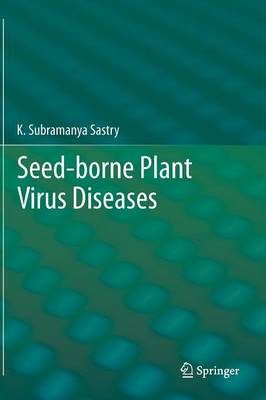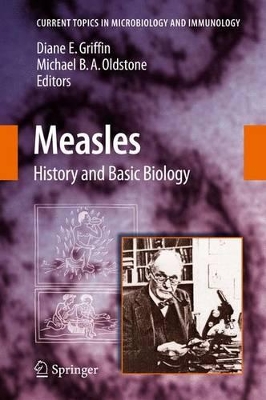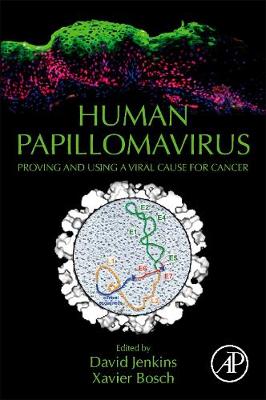In comparison with antibacterial chemotherapy the clinical use of specific antiviral drugs is a fairly recent development. By the 1950s a number had been discovered, but their clinical application was delayed until 1962, when methisazone was used for the treatment of infective complications of smallpox vaccination and idoxuridine in the treatment of herpetic keratitis. In retrospect the reasons for this slowness in development is now evident. It was due in large part to the prevailing view held...
Biosensors for Virus Detection (IOP ebooks)
Seeds provide an efficient means in disseminating plant virus and viroid diseases. The success of modern agriculture depends on pathogen free seed with high yielding character and in turn disease management. There is a serious scientific concern about the transmission of plant viruses sexually through seed and asexually through plant propagules. The present book provides the latest information along with the total list of seed transmitted virus and viroid diseases at global level including, the...
Measles (Current Topics in Microbiology and Immunology, #329)
Measles virus, one of the most contagious of all human viruses, has been largely contained by the development and use of a vaccine that was introduced 50 years ago. These two volumes were timed to honor the introduction of the vaccine and to record the enormous advancements made in understanding the molecular and cell biology, pathogenesis, and control of this infectious disease. Where vaccine has been effectively delivered, endemic measles virus transmission has been eliminated. However, diffic...
This comprehensive volume presents indispensable and up-to-date information on viroids and viroid diseases. It provides a single source of information on the properties of viroids, the economic impact of viroid diseases, and methods for their detection and control. It examines the diseases associated with different plant species, the geographic distribution and epidemiology of viroids, diseases of possible viroid etlology, and the future applications of viroids. The four eminent editors of this...
Practical Handbook of Microbiology, Second Edition
The field of microbiology has developed considerably in the last 20 years, building exponentially on its own discoveries and growing to encompass many other disciplines. Unfortunately, the literature in the field tends to be either encyclopedic in scope or presented as a textbook and oriented for the student. Finding its niche between these two poles, the second edition of the bestselling Practical Handbook of Microbiology provides in-depth chapters on all aspects of the field, from classical mi...
Antiviral RNAi (Methods in Molecular Biology, #721)
Viruses and RNAi share an intricate relationship at many levels. RNAi is an important antiviral defense mechanism in plants and invertebrates, microRNAs – of viral or cellular origin – affect many aspects of virus biology, and replication of many, if not all, mammalian viruses can be suppressed by RNAi. Antiviral RNAi: Concepts, Methods, and Applications provides a collection of protocols for the analysis of viral small RNAs and natural antiviral RNAi responses as well as for the development and...
Advances in Applied Microbiology (Advances in Applied Microbiology, #39)
"Advances in Applied Microbiology" covers a broad range of topics in the fields of applied microbiology and biotechnology. These volumes provide articles which should be of interest to biotechnology researchers in academia and industry, fermentation microbiologists, microbial ecologists, biochemical engineers and applied microbiologists in other speciality areas.
Bacteriophages
Bacteriophages are obligate parasites that require bacterial hosts to replicate. Phages initiate infections by first attaching to the surface of bacteria and injecting their genomes into host cells. Virulent phages then hijack the host's cellular machinery to direct the production of phage virons that burst from the cell leading to bacterial lysis. In this book, the authors discuss the biology, applications and role in health and disease of bacteriophages. Topics include the varied potential rol...
Combo: Loose Leaf Microbiology: A Systems Approach with Connect Access Card
by Marjorie Kelly Cowan
Connect Access Card for Laboratory Exercises in Microbiology
by John P Harley
Mathematical Analysis of Infectious Diseases
Mathematical Analysis of Infectious Diseases updates on the mathematical and epidemiological analysis of infectious diseases. Epidemic mathematical modeling and analysis is important, not only to understand disease progression, but also to provide predictions about the evolution of disease. One of the main focuses of the book is the transmission dynamics of the infectious diseases like COVID-19 and the intervention strategies. It also discusses optimal control strategies like vaccination and pla...
Human Papillomavirus
Human Papillomavirus: Proving and Using a Viral Cause for Cancer presents a steady and massive accumulation of evidence about the role of HPV and prevention of HPV-induced cancer, along with the role and personal commitment of many scientists of different backgrounds in establishing global relevance. This exercise involved years of personal commitment to proving or disproving an idea that aroused initial skepticism, and that still has difficult implications for some. It remains one of the big su...
Inoculating Cities
Inoculating Cities: Case Studies of Urban Pandemic Preparedness begins with a brief historical description of infectious disease outbreaks in cities as well as an overview of infectious disease outbreaks since 2000 that hold profound implications for cities and urban environments – such as severe acute respiratory syndrome (SARS) in 2003, H1N1 influenza in 2009, Ebola virus in 2014, Zika virus in 2015, and more recently, COVID-19 in 2020. Each of these outbreaks affected different geographies of...
Ranaviruses
This is the first book on ranaviruses. Ranaviruses are double-stranded DNA viruses that cause hemorrhagic disease in amphibians, reptiles, and fish. They have caused mass die-offs of ectothermic vertebrates in wild and captive populations around the globe. There is evidence that this pathogen is emerging and responsible for population declines in certain locations. Considering that amphibians and freshwater turtles are suitable hosts and the most imperiled vertebrate taxa in the world, ranavirus...
NEW YORK TIMES BESTSELLER • An urgent wake-up call about the future of emerging viruses and a gripping account of the doctors and scientists fighting to protect us, told through the story of the deadly 2013–2014 Ebola epidemic “Crisis in the Red Zone reads like a thriller. That the story it tells is all true makes it all more terrifying.”—Elizabeth Kolbert, Pulitzer Prize–winning author of The Sixth Extinction From the #1 bestselling author of The Hot Zone, now a National Geographic original...
Biology of Poxviruses (Virology Monographs Die Virusforschung in Einzeldarstellungen, #18)
by Samuel Dales and B.G.T. Pogo
This volume, Biology of Poxviruses, marks our debut as editors of this well known series. We plan to continue the tradition of providing a forum for exten sive, critical reviews of individual virus groups, as exemplified by the present volume. But the pace of discovery is accelerating so rapidly that we feel the need to offer an additional format: volumes that contain collections of shorter, topical reviews on a group of related subjects. Such collections might cut across con ventional boundar...
“A journey into the origins of COVID-19 and the discovery of vaccines and potential cures . . . I learned so much that I didn’t know before—above all, I met the subtle warriors of the laboratory who are working to save all of us from the horror of new pandemics.”—Richard Preston, bestselling author of The Hot Zone and The Demon in the Freezer Winner of the Hilary Weston Writers’ Trust Prize • One of Publishers Weekly’s top ten science books of the season The urgency of the devastating COVID...






















